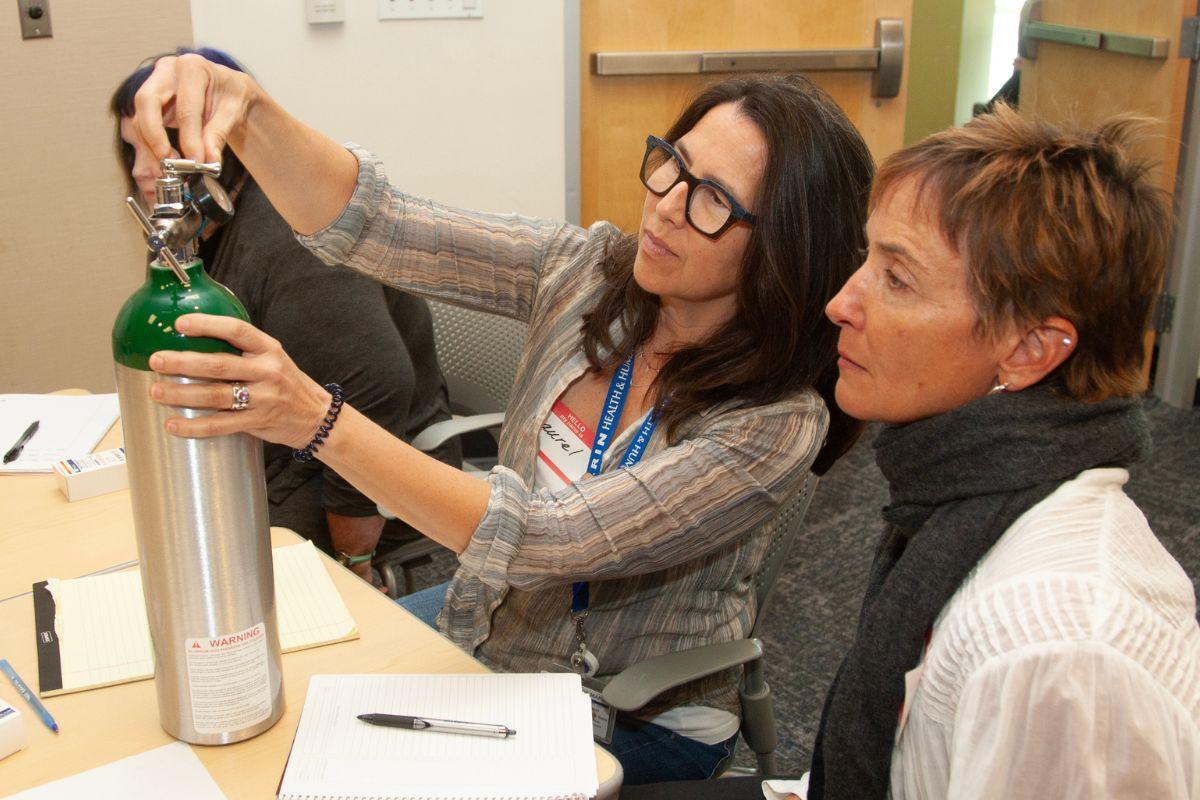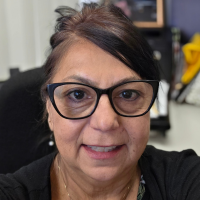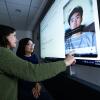
Public health nurses practice their oxygen administration skills during a recent disaster shelter training hosted by UCSF nurses in collaboration with Marin County Health and Human Services (photography by Cindy Chew).
How UCSF Experts are Bolstering Disaster Shelter Care in California
UCSF School of Nursing experts are leading a statewide effort, training public health nurses to provide high quality, frontline disaster shelter care at a time when natural disasters — like wildfires and floods — are increasing in intensity and frequency across California.
As climate change accelerates natural disasters, disaster organizations like the American Red Cross need additional assistance to respond adequately. County health departments across California are taking a more prominent role in disaster care, responding to evacuations and managing shelters.
But a successful disaster response requires an appropriately trained workforce. Many health departments are turning to public health nurses to implement this work.
“The challenge is that counties often lack a sustainable mechanism to train public health nurses on disaster response, which is something nurses often note they want in order to feel prepared,” explains Sahar Nouredini, PhD ’15, MS ’09, alumna of the school’s PhD Nursing program and the Advanced Community Health and International Nursing specialty and associate professor at California State University, East Bay.
Nouredini set out to change that. Partnering with Kate Holbrook, DNP, MS ’11, PHN, assistant professor in the School of Nursing and alumna of the school’s Advanced Community Health and International Nursing specialty, and Zerlyn Ladua, MSN, RN, FNP, director of public health systems preparedness and response for Alameda County Public Health Department for 20 years until her retirement in 2021, the team designed a disaster shelter training tailored for public health nurses.
“Disaster response is an area where public health nurses naturally excel,” says Holbrook, citing nurses’ case management training, knowledge of and connection to community resources, and experience working with vulnerable populations. “Our goal is to help nurses build confidence and refresh their skills, since they may be working in areas where they don’t regularly use their knowledge of certain clinical skills.”

Skill Stations and Practice Scenarios Build Confidence
The training is offered using a flipped classroom approach. Participants complete six virtual learning modules prior to attending a day-long, in-person session. The virtual modules cover skills essential to the ability to provide disaster care including emergency management, basic pharmacology, psychological first aid and more.
The in-person component begins with a targeted recap of the online content before participants get hands-on training at skills stations that cover topics like burn triage, oxygen administration and infection control.
Participants also gain simulated shelter care experience through practice scenarios. They work in small groups to address the scenario before debriefing with all attendees and instructors. “This is where we tap into the knowledge the nurses already have and discuss how that knowledge can be applied in a shelter setting,” says Holbrook.


The first in-person training took place in 2022 with a group of participants that represented each of the 13 San Franciso Bay Area jurisdictions. It was a major success. “Part of the reason this training is so successful is because we make it interactive and encourage discussion,” explains Nouredini, adding that as a result, the training is consistently evolving as nurses share best practices, their questions and their concerns.
As of today, 362 people have completed the online training and 332 people have completed the in-person training, representing 19 California counties. In post-training surveys, participants routinely express that they feel more prepared to work in disaster shelters.
Interest in the training is growing exponentially, both in California and nationally. “We’re hearing from nurses across the country who say this type of training is needed in their state and request guidance on developing curriculum for their region,” says Nouredini.
Holbrook and Nouredini created a “train the trainer” toolkit with the hope that public health departments will replicate and adapt the content for their needs, ultimately expanding access to the learning experience. So far, the toolkit has been shared with five states outside of California.
Supporting Those Impacted by Southern California Fires
Because disaster response policies and protocols vary by region, Holbrook and Nouredini developed the curriculum so that it could be adapted for each county, a feature that has contributed to the success of the training.
“We want to be good partners to our public health departments who are providing crucial services to Californians,” says Holbrook. “One of the ways we can do that is to create tailored training opportunities that help prepare their workforce.”
This commitment was on full display earlier this spring when Holbrook and Nouredini traveled to Orange County, California, to host a training for local public health nurses, several of whom had provided frontline care to those impacted by the wildfires that swept across Southern California in January.

Vivian Gonzales, RN, PHN, CCRN, division manager and director of nursing for Pasadena Public Health Department, provided direct patient care during the Southern California fires, while also coordinating with key partners like Kaiser Permanente and community providers to ensure a unified care approach.
She says the experience made her more committed to ensuring public health nurses in her city are equipped with disaster training. “Having established protocols, clear policies and well-trained staff ensures nurses are ready to respond effectively and confidently in a dynamic, high-pressure environment, which ultimately supports the safety and well-being of the community.”
Gonzales participated in the training led by Holbrook and Nouredini. “[The training] was extremely valuable and relevant due to the instructors’ deep knowledge and experience in disaster response from a public health nursing perspective.”
She says that trainings like this are essential given increases in natural disasters, adding that it’s imperative to plan and conduct trainings routinely.
“The disaster is not the time to start learning,” says Gonzales. “Preparedness is critical.”



